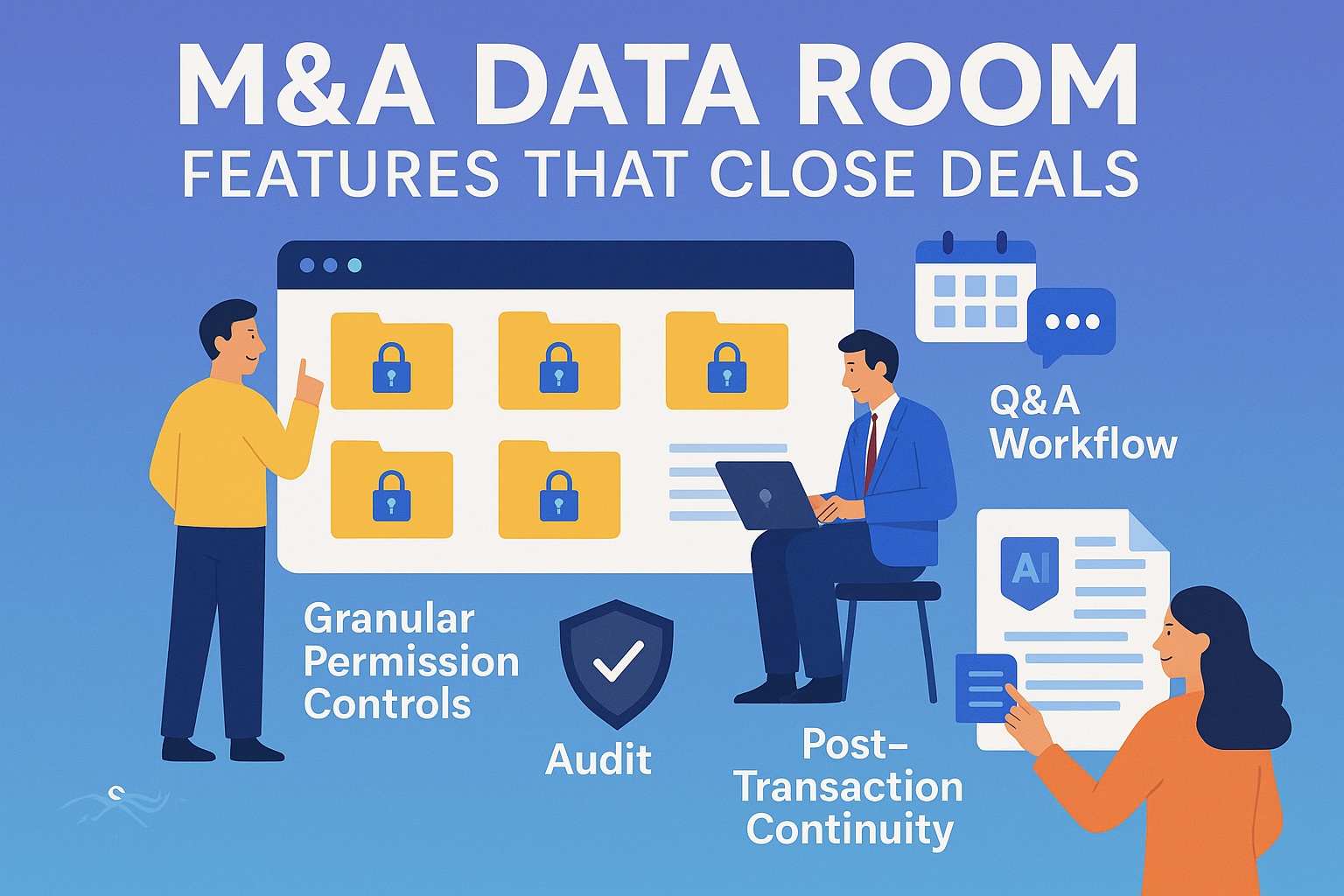Deals break down when due diligence takes too long, people mishandle documents, or buyers lose faith. The M&A data room aims to stop this – serving as a secure workspace and a deal accelerator. But VDRs differ in quality. The best platforms do more than control access. They offer smart tools to speed up timelines, cut down on hassles, and keep both sides safe at every step.
As deals get more complicated and spread out how well things work matters. Here’s what sets data rooms made for mergers and acquisitions apart from regular options.
Detailed Access Controls That See Risks Coming
A key strength of an M&A data room is its ability to give specific access rights. Whether you’re working with a company looking to buy, a private equity group, or outside lawyers, the system must let you control who can see what and when.
New virtual data rooms let managers set view-only rights, turn downloads on or off, add watermarks to specific documents, and cut off access at a set time. This helps keep information safe without slowing down the deal.
Some platforms now include activity heatmaps that show where buyers spend time. These insights help sellers set priorities for communication and predict interest — a clear edge in competitive bidding.
Q&A Modules That Keep Deals Moving
Communication holdups often slow down timelines. A structured Q&A module lets buyers submit questions within the platform, assign them by category (legal, finance operations), and get centralized answers.
This keeps everything in one place — easy to search, with timestamps, and visible to the people who need to see it. For advisors handling multiple deals, these features cut through paperwork clutter and help them focus on the key issues in negotiations.
AI-Powered Redaction and Indexing
Speed is crucial — but not at the expense of security. Modern data rooms now include AI-powered redaction to spot and erase sensitive info from documents before sharing. This proves useful in regulated fields like healthcare, fintech, or defense.
Auto-indexing tools also cut down on setup time. Rather than sorting hundreds of documents, the platform organizes files using ready-made templates or machine learning. The outcome is an environment ready for due diligence from the get-go.
Post-Transaction Continuity and Audit Logs
A high-quality M&A data room continues to support the transaction even after it closes. Audit logs keep a complete record of who accessed and edited what, which helps with regulatory audits or integration reviews. Some platforms let teams set document retention policies, so they can archive final versions while staying compliant.
Companies that often handle M&A deals benefit from the ability to copy folder structures or move data into integration tools. This ensures a smooth handover to operations or post-merger integration teams.

